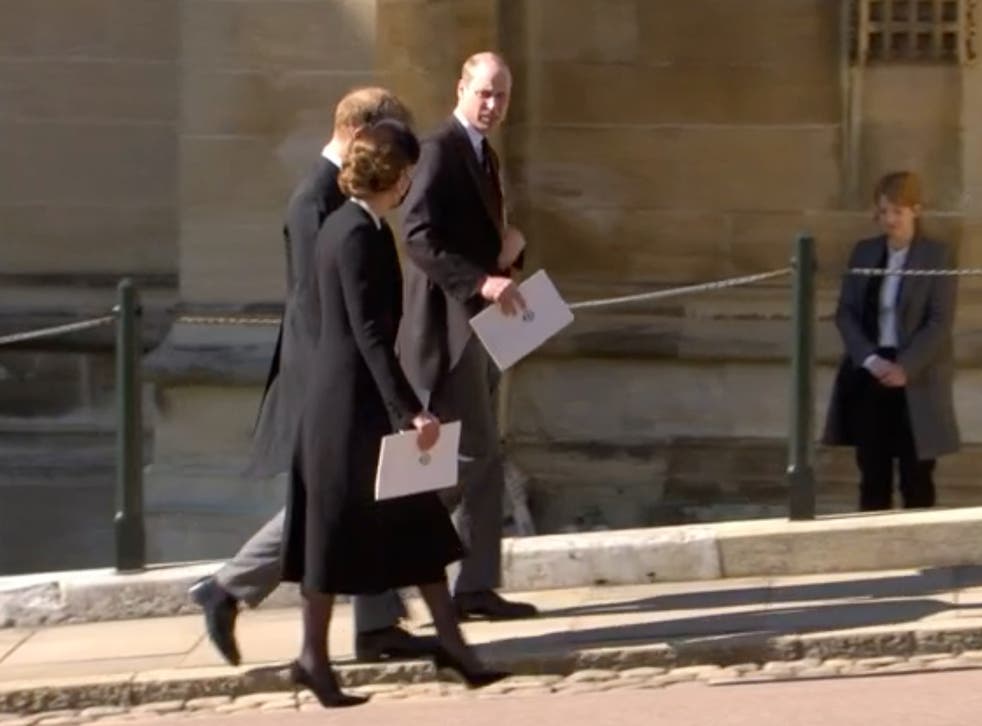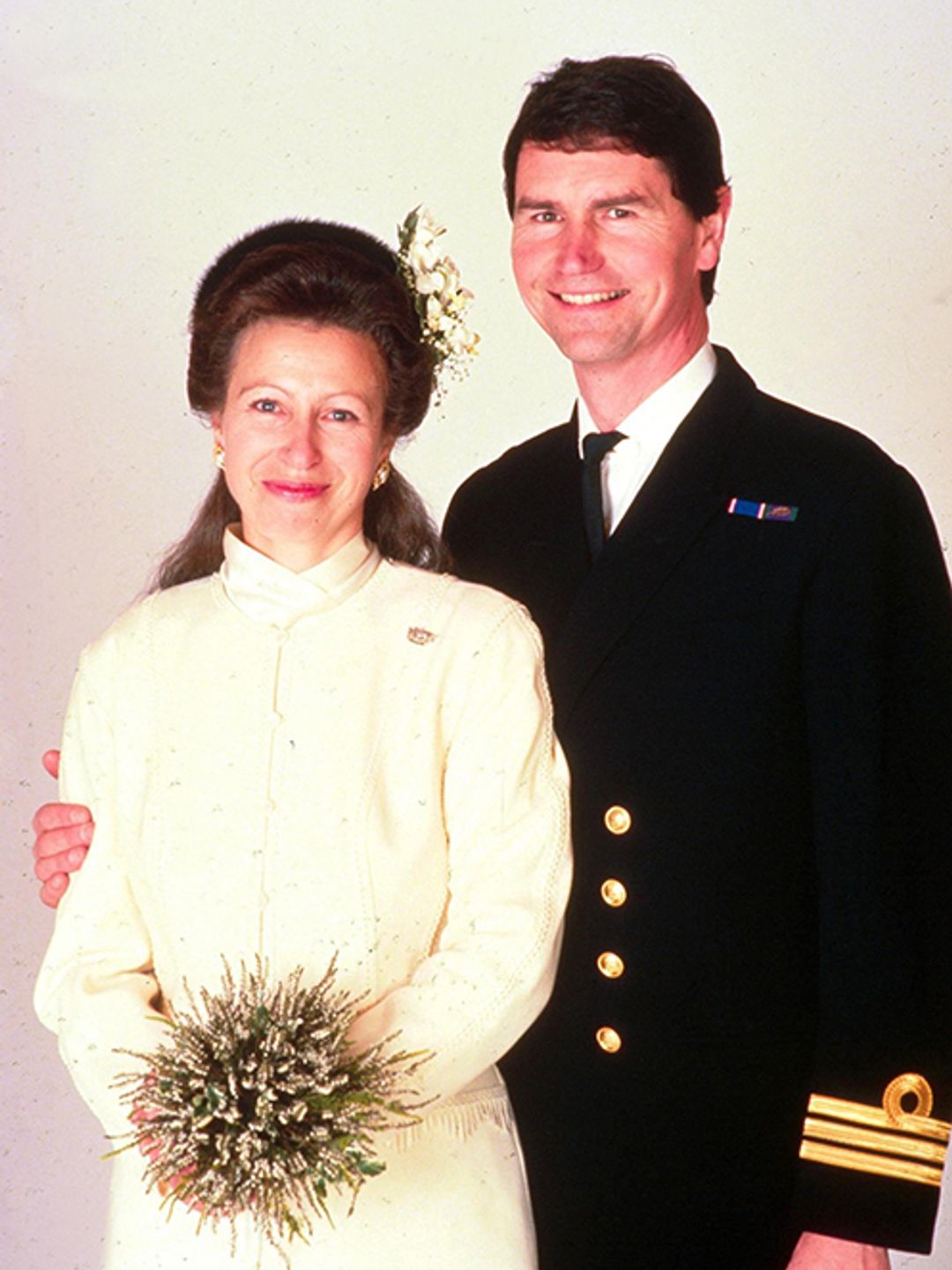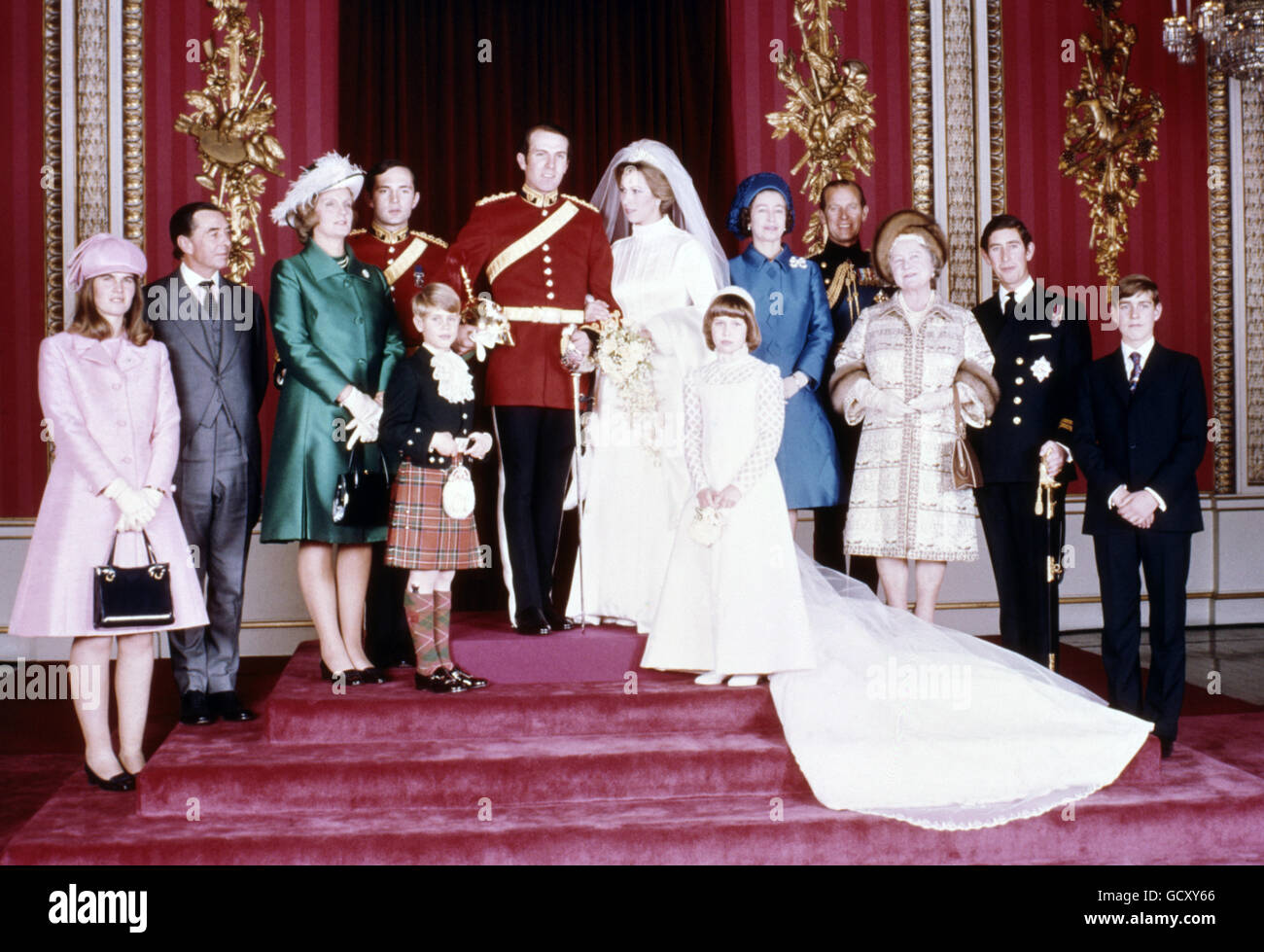Catherine’s Quiet Gesture: The Day She Tried to Bring William and Harry Back Together

For decades, the House of Windsor has been defined by moments of unity—balcony waves, shared laughter, carefully choreographed rituals of togetherness. Yet in recent years, one of the family’s deepest wounds has been the estrangement between
At the funeral of Prince Philip in April 2021, the world saw not only a royal family in mourning but also the painful distance between two brothers once inseparable. And in that solemn setting, it was
The Shadow of Oprah
The funeral came just weeks after Harry and Meghan’s explosive interview with Oprah Winfrey. In that broadcast, the Sussexes made damaging claims about the royal family—allegations of racism, neglect, and personal betrayal.
The timing could not have been more difficult. Prince Philip was gravely ill at the time of the interview, and the fallout left the monarchy shaken. William and Catherine were named directly, accused of coldness toward Meghan. Behind palace walls, reports suggested that feelings ran high, and that William, in particular, felt deeply wounded.
Against this backdrop, Harry’s return to the UK for his grandfather’s funeral was fraught with tension.
A Moment in Procession
As the service ended and the mourners began to file out of
Harry, walking alone, found himself near William and Catherine. For the briefest of moments, the three fell into step together—reminiscent of the years when the trio had been a source of joy to the public, often dubbed the “royal trio” before Meghan’s arrival.
The sight stirred memories of happier times: charity events, easy camaraderie, and the shared burdens of royal life handled with laughter and unity.
Catherine Steps Back
It was then that Catherine made her gesture. Rather than continue the walk in conversation with both men, she
It was a subtle act—so small it might have been missed by some. Yet for those who noticed, it was unmistakable. Catherine was giving the brothers space, signaling her willingness to put aside her own grievances for the sake of reconciliation.
In an atmosphere heavy with grief and tension, her action was both graceful and deliberate.
The Symbolism
Royal gestures are rarely accidental. Catherine’s decision to step back was seen as a deliberate
For a moment, it worked. Cameras captured William and Harry walking side by side, engaged in quiet conversation. After years of headlines about rifts and recriminations, the image offered hope that perhaps healing was possible.
Hope Fades
But as time has shown, the hope sparked that day was short-lived. In the months and years that followed, Harry released his memoir Spare, filled with painful revelations about his family, including claims of conflict with William and even Catherine.
Additional interviews and the publication of Omid Scobie’s Endgame deepened the divide, with accusations extending even to King Charles and Catherine herself. What once seemed like a small crack has widened into what some now view as an
Catherine’s Role
For those who have watched Catherine’s journey within the monarchy, her gesture at Philip’s funeral was emblematic of her character. She has long been seen as a peacemaker, someone who balances tradition with compassion.
Even though Meghan’s comments in the Oprah interview had singled her out—painting her as cold or unsympathetic—Catherine chose not to retaliate publicly. Instead, she responded with quiet dignity, and on that day of mourning, with an act of selflessness.
Her role was not to lecture or confront but to create space for reconciliation, however fleeting.
The Brothers’ Bond: Then and Now
The poignancy of the moment lay in the memory of what once was. William and Harry had been more than brothers; they had been best friends. The world saw them walk together at their mother’s funeral, saw them stand shoulder to shoulder in military uniforms, saw them share easy jokes on royal engagements.
That bond made their estrangement all the more painful for the public to witness. Catherine’s gesture at Philip’s funeral was a reminder of the depth of that bond—a gentle attempt to rekindle it, however briefly.
An Uncertain Future
Today, reconciliation feels almost impossible. The wounds cut deep, the accusations still sting, and both sides appear entrenched. Yet the memory of that day remains: a moment when one woman, standing in the shadow of grief, tried to heal what seemed broken.
Whether the brothers will ever find their way back to each other remains unknown. But Catherine’s gesture endures as a testament to her role as a bridge—between tradition and modernity, between duty and compassion, and, for one fleeting moment, between two estranged brothers.
The Legacy of a Small Step
History often remembers grand speeches, sweeping reforms, or dramatic confrontations. But sometimes, it is the smallest gestures that linger: a hand extended, a glance shared, or a quiet step back to allow two people space.
At Prince Philip’s funeral, Catherine gave the monarchy such a moment. It did not mend the rift. It did not erase the pain. But it showed that, even amid sorrow and division, there is room for grace.
And perhaps one day, when time has softened the sharpest edges of memory, it will be that gesture—a woman slowing her pace so that two brothers could walk side by side—that points the way to healing.
👑 Princess Anne’s Scandalous Divorce: The Love Letters, the Illegitimate Child, and the Courage to Break Tradition


The British royal family has always lived under the relentless scrutiny of the press and the public eye. Every gesture, every word, and every relationship is magnified a hundred times over. Yet, among the royals, one figure has long stood out for her resilience, independence, and refusal to play by the usual script:
Her life may have seemed a fairy tale at first, but behind the palace walls unfolded a story of betrayal, scandal, and ultimately courage — a story that shattered centuries of royal precedent.
A Fairytale Beginning
Princess Anne married Captain Mark Phillips, an accomplished sportsman and fellow equestrian, in 1973. Their wedding was broadcast worldwide, celebrated as the union of a princess and a champion horseman.
The early years of their marriage brought joy. In 1977, they welcomed their first child, Peter Phillips, and four years later, their daughter Zara Phillips (now Zara Tindall). With their young family, the couple seemed to embody stability. Anne balanced her royal duties with motherhood, while Mark built his career in equestrian sports.
But the fairy tale would not last.
Cracks Behind Closed Doors
By the late 1980s, Anne and Mark’s relationship had begun to crumble. The long separations, pressures of public life, and fundamental differences took their toll. By 1989, the couple were living separately, their marriage surviving in name only.
Then came the scandal that rocked the monarchy.
The Love Letters Scandal
In 1989, a tabloid published a series of intimate love letters written by Timothy Laurence, a naval officer and Anne’s close confidant — who also happened to be one of the Queen’s equerries (personal assistants).
The letters, stolen and leaked, revealed Anne’s deeply personal feelings for Laurence. Though the press coverage was brutal, it exposed what many within palace circles already knew: Anne and Mark’s marriage was effectively over, and her heart belonged elsewhere.
After the letters were made public, Anne and Mark’s relationship became unbearable. Though they did not immediately divorce, their separation was now undeniable and permanent.
A Paternity Scandal Emerges
As if the letters weren’t enough, another bombshell soon hit the headlines. In 1991, a New Zealand art teacher, Heather Tonkin, came forward claiming that her five-year-old daughter was fathered by Mark Phillips.
The claim was controversial at first, but later DNA testing confirmed Mark’s paternity. This revelation was devastating, not only to Anne personally but also to the royal family’s carefully managed image.
For the British monarchy, already battered by whispers of Charles and Camilla’s affair and Sarah Ferguson’s scandals, this was another unwelcome storm.
Divorce at Last
By 1992, Anne had reached her limit. She filed for divorce, and on 23 April 1992, her marriage to Mark Phillips officially ended.
It was a watershed moment in royal history. Anne became the first child of Queen Elizabeth II to divorce — breaking centuries of precedent in which royal marriages, no matter how loveless, were kept intact for appearance’s sake.
But Anne did not stop there. Later that same year, she married the man from those infamous letters: Timothy Laurence. Unlike her first wedding, Anne’s second marriage was far quieter, held at a modest ceremony in Scotland, away from the grandeur of Westminster Abbey or St. Paul’s Cathedral.
A Life Reclaimed
Though scandal followed her, Anne never allowed herself to be defined by it. In fact, her decision to divorce and remarry made her, in many ways, more relatable to the public. She had endured betrayal, heartbreak, and humiliation — but she had also chosen happiness over duty, a choice that resonated deeply with ordinary people.
Today, Princess Anne is often celebrated as one of the hardest-working royals, respected for her no-nonsense approach and unwavering commitment to service. But behind that steel exterior lies the memory of a turbulent chapter — a reminder that even royalty cannot escape the chaos of love, betrayal, and scandal.
Legacy of Courage
Anne’s divorce set a precedent. Within years, her brothers Charles, Andrew, and later even Edward would face their own marital struggles. But it was Anne who broke the silence first, proving that even a princess could walk away from a failing marriage.
In the end, the story of Anne, Mark, and Timothy is not simply about scandal. It is about a woman who refused to be trapped by tradition, who endured public humiliation with quiet strength, and who ultimately chose love and peace over the suffocating weight of appearances.
Princess Anne may not wear the crown, but in that decision, she revealed a different kind of royal power: the power of authenticity.









